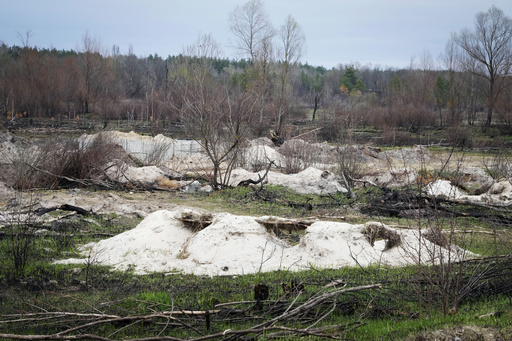
On Friday, concerns surrounding nuclear safety in Ukraine resurfaced following an attack by a drone armed with a warhead targeting the external structure of the Chernobyl nuclear plant, notorious for being the site of the world’s most catastrophic nuclear disaster. The drone strike, which the Ukrainian government attributed to Russian forces, did manage to hit the protective outer shell but did not penetrate the inner containment layer. Fortunately, the levels of radiation remained stable, as reported by the International Atomic Energy Agency (IAEA), the U.N. nuclear watchdog.
In response to these accusations, Russia rejected any involvement and suggested that Ukraine orchestrated a false flag operation. The conflicting claims from both sides remain unverified by any independent sources.
The incident is particularly significant given its proximity to the Munich Security Conference, where global leaders gather to seek solutions toward ending the ongoing conflict, now almost three years in duration. Both nations have exchanged allegations, each asserting that the other is sabotaging President Donald Trump’s initiative to facilitate a peace agreement.
Rafael Mariano Grossi, the head of the IAEA, labeled the incident on Friday as alarmingly concerning, indicating the ongoing risks surrounding nuclear safety amid the conflict. He urged for utmost military caution around Ukraine’s nuclear facilities, emphasizing that complacency is not an option.
Ukrainian President Volodymyr Zelenskyy disclosed that a Russian drone impacted the outer shell of reactor No. 4 at Chernobyl—the same reactor that suffered a catastrophic explosion on April 26, 1986, which released immense radioactive materials across Europe. The protective structure, built at a cost of 2 billion euros ($2.1 billion) and completed in 2019, was designed to provide safety from external threats while enclosing the original concrete sarcophagus that was erected post-explosion.
Experts have reassured that the drone strike did not compromise the integrity of the concrete shelter, which has been built to endure greater impacts. Although three other reactors at the Chernobyl facility are non-operational, the site still contains spent nuclear fuel and several contaminated materials awaiting proper dismantling as part of a prolonged decommissioning process.
The Zaporizhzhia nuclear power plant, the largest in Europe and currently under Russian control, has also experienced drone strikes, leading to mutual accusations between Russia and Ukraine, albeit without causing any radiation risks until now. However, a series of assaults earlier in the week prompted the cancellation of a planned rotation for IAEA inspectors at the Zaporizhzhia site.
Following the Russian occupation of Chernobyl at the war’s outset, there were heightened fears of potential damages that could result in a radioactive crisis. Since Russian forces withdrew in late March 2022, Ukraine has focused on enhancing protections at the site, including implementing anti-drone technologies and establishing anti-tank defenses.
In addition to these immediate threats, nearly three years of conflict have resulted in frequent power disruptions affecting the crucial cooling systems at Chernobyl and the country’s operational nuclear plants, heightening concerns over the possibility of overheating spent nuclear fuel. Such outages generally occur after shelling or drone attacks on surrounding power distribution lines.
Nuclear safety experts have indicated that even though an outage at Chernobyl may not lead to an immediate radiation incident, monitoring systems installed by the IAEA would become non-functional in the absence of electricity. Although experts deem it unlikely that a drone or missile strike could cause a significant radioactive release without allowing authorities time to respond, the possibility of a power cut or deliberate attacks on nuclear facilities could spur widespread panic and pose serious challenges to ongoing peace efforts.

